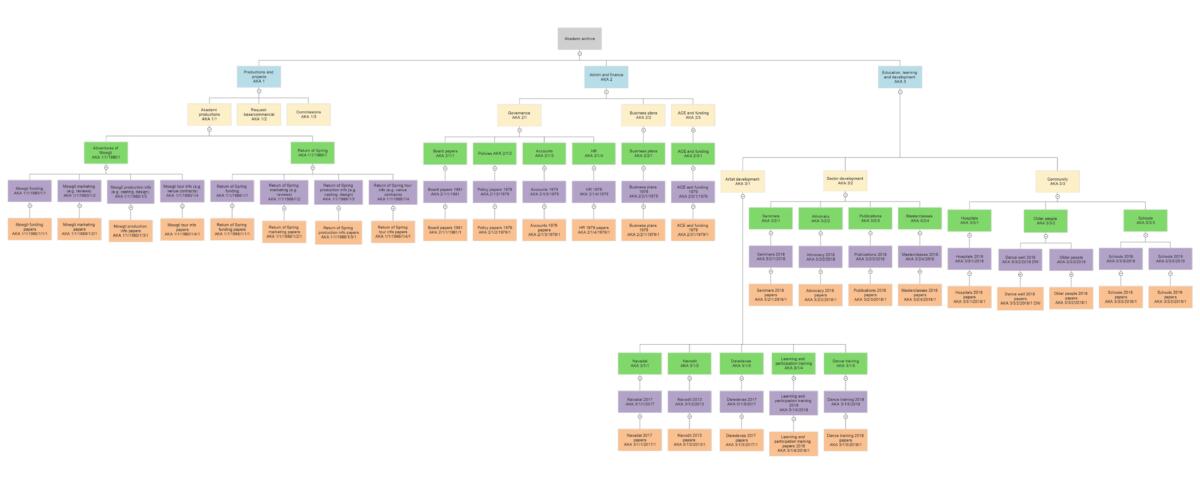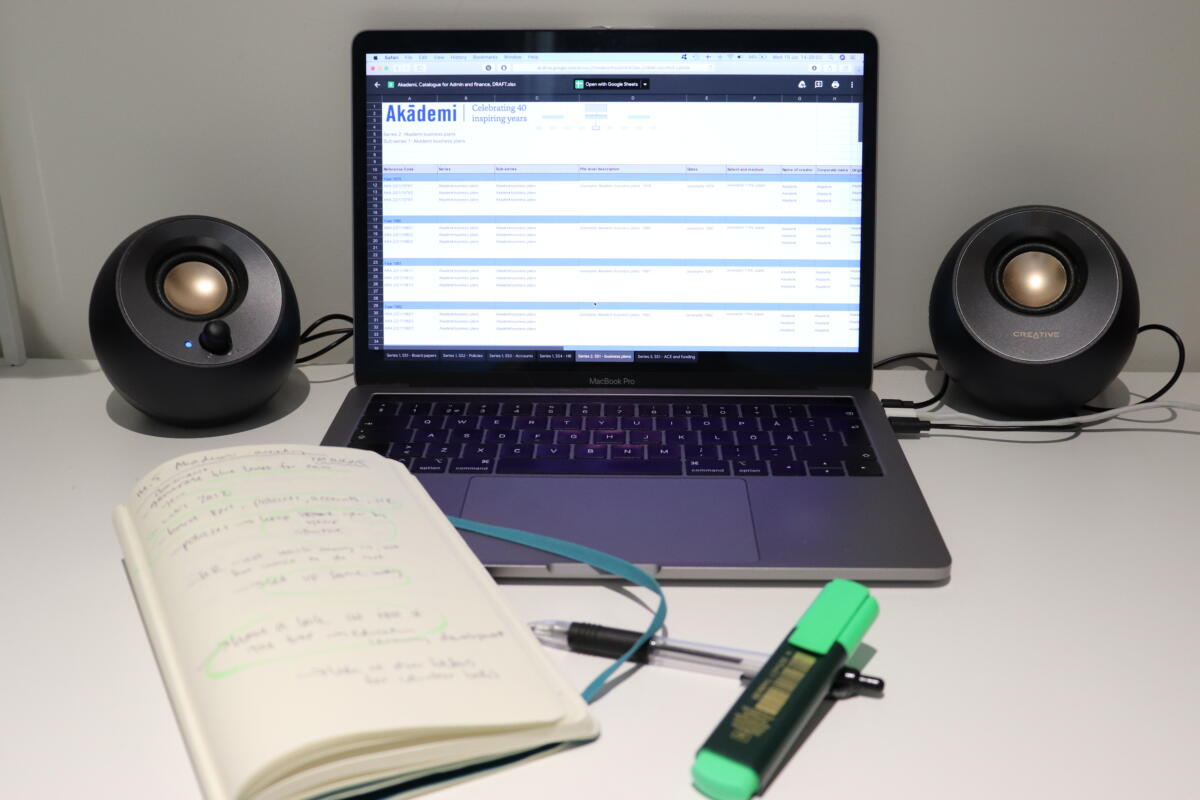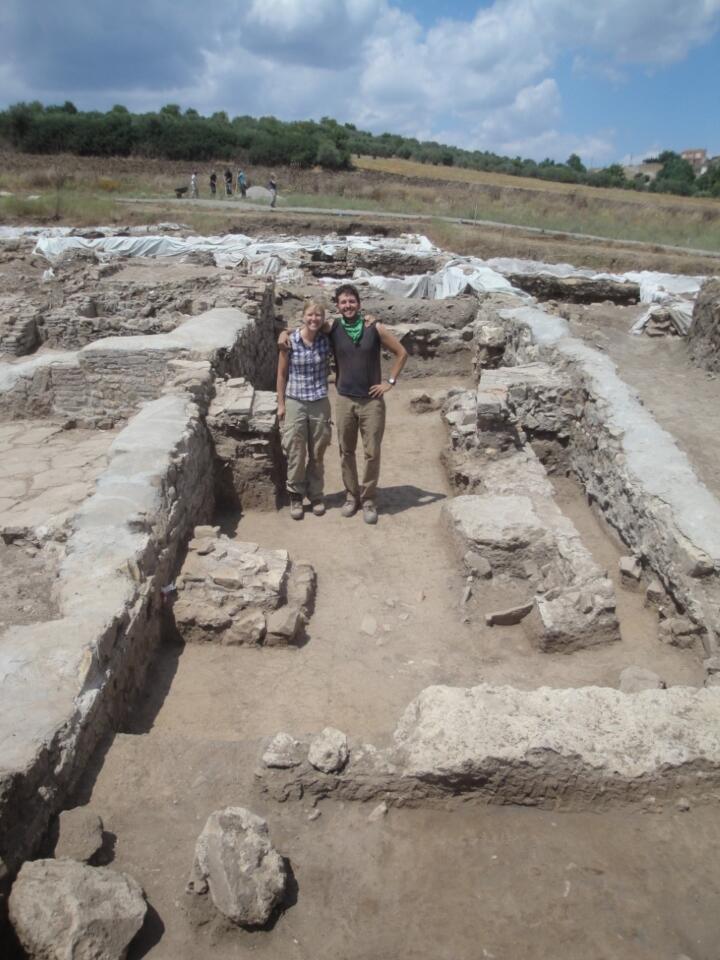From Cataloguing Artefacts to Cataloguing Dance Archives: an Archaeologist Explores

This year, we have embarked on an enormous archiving adventure to celebrate Akademi’s heritage and preserve our history at the V&A Museum. We have some wonderful volunteers who are helping us in this process. We invited them to share their experience, work and findings on South Asian dance in the UK. This post in the series deals with the cataloguing part of the work, and how the archive is organised in order to facilitate future work and research into Akademi’s heritage.
Helena Meskanen is an archaeologist, specialising on ancient Greece. Originally from Finland, she moved to London in 2012 to do her PhD on Spartan religion at King’s College London. She started volunteering on the Akademi project in the spring right at the start of the lockdown.
I am writing this post about 2 months into the project. Whatever I had in mind when I sent my application to be part of this archive project as a volunteer, I did not anticipate the work would be done in social isolation, at home, with regular catch up calls via Zoom. But I think this will be a part of wider, global realisation of how much work we can actually do independently, and which tasks still need to be done in person, with physical access.

Photo of a laptop open to an archiving spreadsheet: The work so far was done remotely.
I have worked on the cataloguing side of the project so far. This has included thinking about how the vast amount of material Akademi holds on the past 40 years of activity should be organised within the catalogues in order to facilitate the move to the V&A (and eventually helping future researchers easily study the material). I have worked with an archivist, who has taught me the basic principles of creating and using archives and their catalogues.
In our work, I have created ‘archive trees’ of the collection. These are much like family trees, but they organise and categorise Akademi’s activities and the material held about them into a neat picture. This in turn has been used to create cataloguing numbers to use in the catalogue itself.

Archive tree: An archive tree for Akademi, showing branches for
productions, administration and learning and development.
Looking at the organisation via the archive tree has really given me a greater sense of understanding of the wide scope of Akademi’s history and activities for the past 30 years. At a glance, you can see the work on productions, dance training and community outreach projects. I moved from Finland to London 7 years ago, and until joining this project I had not heard of Akademi; but after working on the project for about 2 months, I’m amazed by its rich heritage and contacts within the arts sector in the country.
My own background is in archaeology; I completed my PhD last year, and throughout my studies I have taken part in various archaeological fieldwork projects. I therefore have experience in recording details about objects and updating catalogues for each of the excavation seasons as objects were discovered. Looking at creating catalogues for a more complete set of items was then both familiar, but also new.
While an excavation catalogue expands daily, and no one knows how many objects, and what kinds, we will have at the end of a season, at Akademi we had a sense of the types of things that should go in the catalogue, and what kinds of categories we had. This gives the work a slightly different approach, as we have been more concerned with the logic behind the organisation of the material and making it easy for others to access. Since we have not been able to work on the physical material (yet), we have in essence been building the skeleton of the catalogue. Once we can start looking at different boxes and folders, the catalogue will be populated with interesting items.

Excavation site photo: Helena and her colleague Matt excavating a Roman villa in Rionero in Vulture, Italy.
For each entry, we will add both descriptions of what it is, but also descriptions of categories it belongs to, so that it will pop up when someone is searching for things related to those categories. As an example, papers from Akademi’s board meetings will have descriptions of their content (board papers), year (e.g. 1995), and what category (Akademi governance) they belong to in the archive, among other details. Their former and current location will also be recorded, so that anyone wanting to look at the physical objects, can immediately see where they are located.
A category of information we have added to the archive recently have been sections of the website. As a website is constantly under revision, and new things are added and some removed, it is important to record those pages we refer to in our archiving work.
The function of websites has changed drastically in the past 20+ years, and they will likely develop in the future as well. And for that reason, preserving the website as it stands today is important for any researchers looking at this material in the future. For those interested in reading about early websites, you might find this post on Gizmodo interesting: 23 Ancient Web Sites That Are Still Alive
Alongside, I have started a draft of the collection description. This will be the first point of call for anyone interested in researching Akademi’s archive, so it is important for it to give a quick overview of what Akademi is, and what the collection consists of. For this part of the work, I researched the contacts Akademi has had with other cultural institutions in London and elsewhere. The work my fellow volunteers have done on the historical timeline was extremely useful, and it has been interesting to see what they have been doing during this project since we do not regularly see each other.
During my research life, I have read through hundreds of excavation reports, often from very old excavations at the turn of the 19th century. Recording principles were only slowly taking shape, causing all sorts of challenges when modern researchers try to piece together answers for new questions the original excavators did not think about. It has therefore been a nice surprise to see how well thought out the archiving principles are today, and I can only wish these had been in use 100 years ago. I hope that in the future, when a researcher contacts the V&A to study the Akademi collection, they will find that the way we organised the material today is still useful for them.
Watch this space for more blogposts from our wonderful Heritage Project volunteers.